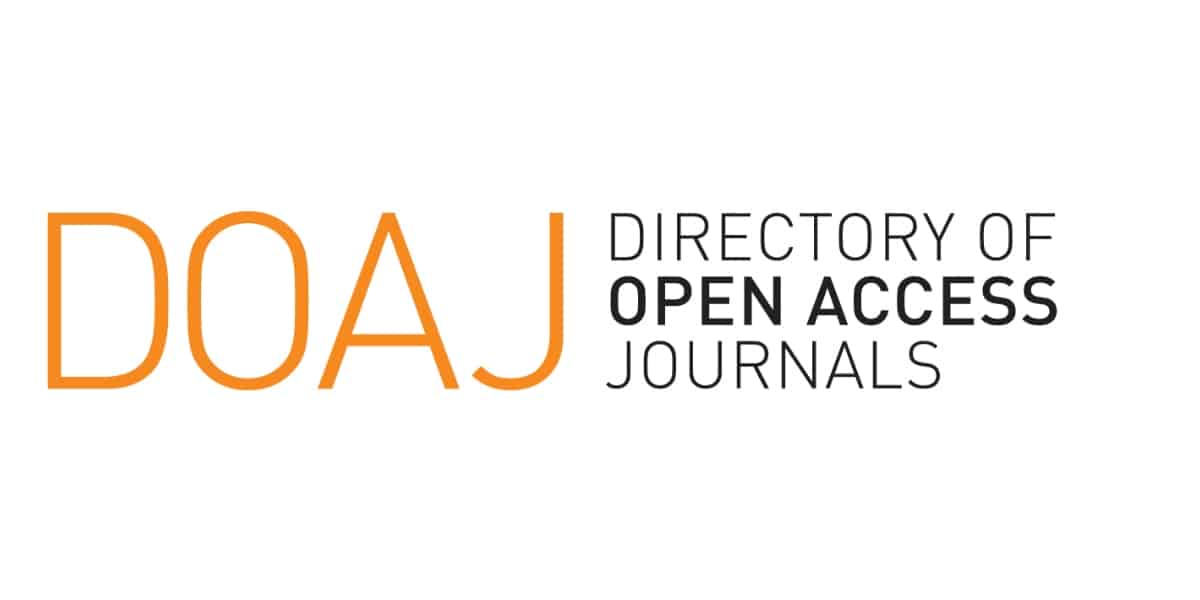Analysis of COD and BOD5 at the Inlet and Outlet of the Wastewater Treatment Plant (WWTP) at Hospital X
Keywords:
BOD, COD, Hospital wasteAbstract
Hospitals are one of the service facilities that produce large amounts and quality of liquid waste that requires special attention because it contains hazardous materials for public health and the environment. This study aims to determine the quality of COD and BOD effluents in X Hospital. The type of research used is observational with a descriptive approach. The sampling technique used was purposive sampling, where wastewater samples were taken from two points, namely the inlet and the outlet of the WWTP. Based on the results of the laboratory analysis of the wastewater samples from Hospital X, it can be concluded that the average COD value at the inlet of the WWTP was 64.04 mg/L, while the average COD value at the outlet of the WWTP was 47.90 mg/L, and the average BOD value at the inlet was 12.69 mg/L, while the average BOD value at the outlet was 1.60 mg/L. All of these values are qualified according to the Hospital Activity Liquid Wastewater Quality Standards based on Central Java Province Regional Regulation No. 5 of 2012. It is expected that Hospital X will continue to maintain the wastewater treatment plant.
References
[1] M. Apriansyah, A. Agrasadya, A. Sunarto, L. Irawati, and P. N. Kencana, “Pengembangan SDM Rumah Sakit di Tengah Pandemi Covid-19 Pada RS. Medika BSD,” Dedik. PKM, vol. 2, no. 1, p. 61, 2020, doi: 10.32493/dedikasipkm.v2i1.8493.
[2] H. Christianto and E. D. A. M. Dewi, “Act of Revealing Identity of Patient Confirmed Covid-19 by Hospitals Based on Human Rights and Criminal Law Perspectives,” J. HAM, vol. 13, no. 1, pp. 131–150, 2022,
[3] dan N. L. U. S. Sukadewi, N. M. T. E., Ni Putu W. A., “Efektivitas Sistem Pengolahan Limbah Cair di Rumah Sakit Bali Med Denpasar Tahun 2020,” Higiene, vol. 6, no. 3, pp. 113–120, 2020, [Online]. Available: file:///C:/Users/ACER A314/Downloads/garuda2195652.pdf
[4] S. Perancangan et al., “Studi Perancangan Instalasi Pengolahan Air Limbah (IPAL) Domestik di Desa Butuh, Kecamatan Butuh, Kabupaten Purworejo,” Obs. J. Publ. Ilmu Psikol., vol. 2, no. 4, pp. 167–178, Aug. 2024, doi: 10.61132/OBSERVASI.V2I4.669.
[5] M. M. Safira, I. Chotimah, and W. Syari, “Hubungan Mutu Pelayanan terhadap Citra di Rumah Sakit X Kota Bogor Tahun 2022,” PROMOTOR, vol. 6, no. 4, pp. 375–380, Nov. 2023, doi: 10.32832/PRO.V6I4.270.
[6] C. C. Moniaga, P. Prayogo, R. Nansy, and S. Koloay, “Kajian Yuridis Tentang Pertanggungjawaban Rumah Sakit Menurut Doktrin Respondeat Superior,” LEX Adm., vol. 12, no. 5, Sep. 2024, Accessed: Oct. 06, 2024. [Online]. Available: https://ejournal.unsrat.ac.id/v3/index.php/administratum/article/view/58018
[7] A. Putri, S. D. Anggraeni, R. Isnarti, and N. N. Khairunnisa, “Studi Komparatif Penanganan Pandemi di Taiwan: SARS, H1N1, dan COVID-19,” Transform. Glob., vol. 8, no. 1, pp. 44–66, 2021, doi: 10.21776/ub.jtg.2021.008.01.4.
[8] R. Jannah, E. Nurmardiansyah, and H. Sulistyanto, “Implementation of the Duties and Authorities of the Community Health Center in Managing Medical Waste as a Form of Environmental Health Protection (Case Study at the Wonosalam 2 Health Center, Demak),” SOEPRA, vol. 9, no. 1, pp. 137–155, Jun. 2023, doi: 10.24167/sjhk.v9i1.10084.
[9] Monika Fatma Aulianita and Anggraeni Endah Kusumaningrum, “Tanggung Jawab Puskesmas Terhadap Pemantauan Pasien Isolasi Mandiri Dalam Pencegahan Dan Pengendalian Penyebaran Covid-19,” JISPENDIORA J. Ilmu Sos. Pendidik. Dan Hum., vol. 1, no. 2, pp. 123–130, May 2023,
[10] A. M. Asrun, L. A. Sihombing, and Y. Nuraeni, “Dampak Pengelolaan Sampah Medis Dihubungkan Dengan Undang-Undang No 36 Tahun 2009 Tentang Kesehatan Dan Undang-Undang No. 32 Tahun 2009 Tentang Perlindungan Dan Pengelolaan Lingkungan Hidup,” PAJOUL (Pakuan Justice J. Law), vol. 1, no. 1, pp. 33–46, 2020, [Online]. Available: https://journal.unpak.ac.id/index.php/pajoul/index
[11] I. Gede and P. Yoga, “Perundang-Undangan Rumah Sakit Dalam Pengelolaan Limbah Medis Sebagai Upaya Memantapkan Tanggung Jawab Lingkungan,” J. Ecocentrism, vol. 3, no. 2, pp. 28–35, Aug. 2023, doi: 10.36733/JECO.V3I2.6636.
[12] Halimah Nur, Budhiartle Arrie, and Fitria, “Kebijakan Rumah Sakit Dalam Sistem Pengelolaan Kesehatan Lingkungan,” J. Adm. Law, vol. 1, no. 1, pp. 1–15, 2020, doi: 10.22437/MENDAPO.V1I1.8853.
[13] F. Kesehatan Masyarakat, D. Nur Afriliani, and N. Astorina Yunita Dewanti, “Penilaian Proses Pengolahan Limbah Cair di Rumah Sakit Bhayangkara Tk.I R. Said Sukanto Jakarta,” MEDIA Kesehat. Masy. Indones., vol. 19, no. 4, pp. 290–296, Aug. 2020, doi: 10.14710/MKMI.19.4.290-296.
[14] S. Khoirunisa, “Pengujian Air Limbah Cair Rumah Sakit Menggunakan Parameter Total Coliform dengan Metode MPM (Most Probable Number) di Balai Riset dan Standardisasi Industri (Baristand) Provinsi Lampung,” J. Sci. Med. Lab., 2023, Accessed: Oct. 06, 2024. [Online]. Available: https://rumahjurnal.lppmumpri.ac.id/index.php/JOSMEDLY/article/view/50
[15] R. F. Witjaksono and M. R. Sururi, “Evaluasi Kinerja Instalasi Pengolahan Air Limbah Rumah Sakit X di Jakarta Pusat,” J. Serambi Eng., vol. 8, no. 2, Apr. 2023, doi: 10.32672/JSE.V8I2.6018.
[16] P. Pitriani et al., “IPAL Efektivitas Biofilter Dalam Mereduksi Polutan Pada Air Limbah Rumah Sakit Di Kota Palu,” Afiasi J. Kesehat. Masy., vol. 7, no. 1, pp. 245–253, Apr. 2022, doi: 10.31943/AFIASI.V7I1.196.
[17] S. Rahmawati, M. Iqbal, N. Y. Hanurawati, and R. Y. Irianto, “Variasi Lama Waktu Elektrokoagulasi dan Filtrasi Terhadap Degradasi Kadar COD pada Limbah Cair Rumah Sakit,” J. Pengendali. Pencemaran Lingkung., vol. 6, no. 1, pp. 45–52, Apr. 2024, doi: 10.35970/JPPL.V6I1.2195.
[18] S. G. Prihatino, E. Yuliani, and R. Haribowo, “Studi Evaluasi Instalasi Pengolahan Air Limbah pada Rumah Sakit Umum Daerah Dr. Haryoto Kabupaten Lumajang,” J. Teknol. dan Rekayasa Sumber Daya Air, vol. 2, no. 2, pp. 156–165, 2022, doi: 10.21776/ub.jtresda.2022.002.02.13.
[19] Fachruddin Azwari, K. Hadidjah, Christine Elia Benedicta, and R. Wahyuni, “Analisis Parameter pH, BOD, TSS, Minyak Dan Lemak Serta Total Coliform Pada Limbah Cair Rumah Sakit Gerbang Sehat Long Bagun Mahakam Ulu,” J. Pengendali. Pencemaran Lingkung., vol. 5, no. 1, pp. 45–51, Apr. 2023, doi: 10.35970/jppl.v5i1.1796.
[20] A. B. Surendra, D. Ciptaningtyas, and L. H. Pratopo, “Kinerja Advanced Oxidation Process (Aop) Terintegerasi Dengan Fine Bubble Diffuser Pada Pengolahan Limbah Cair Rumah Potong Ayam,” Hibrida J. Pertanian, Peternakan, Perikan., vol. 2, no. 2, pp. 51–60, Sep. 2024, doi: 10.3766/HIBRIDA.V2I2.5982.
[21] N. Fadzry, H. Hidayat, and E. Eniati, “Analisis COD, BOD dan DO pada Instalasi Pengolahan Air Limbah (IPAL) Balai Pengelolaan Infrastruktur Air Limbah dan Air Minum Perkotaan Dinas PUP-ESDM Yogyakarta,” Indones. J. Chem. Res., pp. 80–89, Dec. 2020, doi: 10.20885/IJCER.VOL5.ISS2.ART5.
[22] N. Inayah and H. Ni, “Analisis Kualitas BOD (Biological Oxygen Demand) dan COD (Chemical Oxygen Demand) Air Sungai Dhurbugan Batuputih Sumenep,” EVOLUSI J. Math. Sci., vol. 6, no. 2, pp. 59–62, Dec. 2022, doi: 10.51673/EVOLUSI.V6I2.1284.
[23] M. A. Naufal and S. Salmahaminati, “Analisis Kadar COD (Chemical Oxygen Demand) Dan TSS (Total Suspended Solid) Pada Air Sungai Di Daerah Semarang,” Indones. J. Chem. Res., vol. 9, no. 1, Jul. 2024, doi: 10.20885/IJCR.VOL9.ISS1.ART4.
[24] I. Ramadhan, Y. Rohyami, and R. Ahdiaty, “Verifikasi Metode Uji COD secara Spektrofotometri UV-Vis untuk Low Concentration dan High Concentration,” Indones. J. Chem. Anal., vol. 5, no. 1, pp. 52–61, Mar. 2022, doi: 10.20885/IJCA.VOL5.ISS1.ART6.
[25] A. Ayundha, W. Lestari, and E. Erawati, “Analisis Parameter COD Dan BOD Pengolahan Limbah Cair Di RSUD Dr.Moewardi Metode Biofilter Aerob,” Pros. Semin. Nas. Unimus, vol. 5, no. 0, 2022, Accessed: Oct. 06, 2024. [Online]. Available: https://prosiding.unimus.ac.id/index.php/semnas/article/view/1241
[26] E. Agung Utomo and B. Lekatompessy, “Efisiensi Penurunan Kadar Bod Dan Tss Dengan Bakteri Kultur Em4 Pada Air Limbah Rumah Sakit Dengan Sistem Aerasi,” J. TechLINK, vol. 6, no. 2, 2022.
[27] S. Kurniajati, M. A. Yusiana, and I. L. Utami, “Literatur Review: Analisis Kualitas Air Limbah Rumah Sakit Menggunakan Indikator Baku Mutu BOD, COD, TSS,” J. Penelit. Keperawatan, vol. 9, no. 2, pp. 243–251, Aug. 2023, doi: 10.32660/JPK.V9I2.697.
[28] F. Azwari et al., “Analisis Parameter pH, BOD, TSS, Minyak Dan Lemak Serta Total Coliform Pada Limbah Cair Rumah Sakit Gerbang Sehat Long Bagun Mahakam Ulu,” J. Pengendali. Pencemaran Lingkung., vol. 5, no. 1, pp. 45–51, Apr. 2023, doi: 10.35970/JPPL.V5I1.1796.
[29] E. Sasiang, S. Maddusa, and O. J. Sumampouw, “Efektivitas Instalasi Pengolahan Air Limbah Berdasarkan Parameter Biological Oxygen Demand, Chemical Oxygen Demand Dan Derajat Keasaman Di Rumah Sakit Umum Pancaran Kasih Manado,” 2019.
[30] B. Rahmat and A. Mallongi, “Studi Karakteristik dan Kualitas BOD dan COD Limbah Cair Rumah Sakit Umum Daerah Lanto DG. Pasewang Kabupaten Jeneponto,” J. Nas. Ilmu Kesehat., vol. 1, no. 69, pp. 1–16, 2018.
Downloads
Published
Issue
Section
License
Copyright (c) 2024 Sunardi , Fakhrizal Falah, Argoto Mahayana, Sumardiyono, Nur Hidayati, Soebiyanto (Author)

This work is licensed under a Creative Commons Attribution 4.0 International License.
















